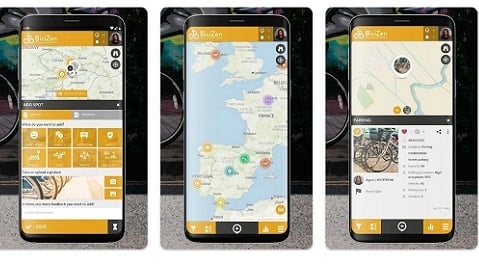
In a weekly column, alternately written by Lucien Engelen, Maarten Steinbuch, Carlo van de Weijer, Daan Kersten and Tessie Hartjes, E52 tries to find out what the future will look like. All five contributors are all working on technologies that can provide solutions to the problems of our time. This Sunday, it‘s Carlo van de Weijer’s turn.
Here are all the prior editions of [TOMORROW IS GOOD]
This week the VeloCity conference took place in Nijmegen, the world’s largest conference around the bicycle as a means of transport for urban areas. The bicycle is hot, and its popularity will grow further in the coming years. Smart Mobility at its best. There is a growing number of benefits attached to the bicycle that are hard to beat in any future scenario. The most important:
Cost-effective: Facilitating bicycle traffic comes free for the government, as opposed to a public transport system which always costs at least 20 to 30 cents per passenger kilometer government fee to run. Yes, bicycle paths and bicycle parking cost money (about 4 cents per passenger mileage), but there’s a benefit in saved social costs: for every mile you cycle, you’ll save the government 5 to 10 cents of saved medical cost.
Corridor Capacity: The performance of a transport network is often measured in corridor capacity: how many people can you transport in one direction per 2-3m wide corridor: Well-occupied cars reach a maximum of 3,000 people, trains, trams or buses stop at 10-15,000 passengers per hour. The metro is the champion with 40-50,000 passengers, but its huge costs are not justifiable in cities with more than half a million inhabitants. Bikes can transport up to 15000 people per hour per direction over such a corridor, which makes him a champion after the metro.
A bicycle is friendlier for the street view than any alternative; Among other things, our reptile brain responds much more positive to its human proportions compared to large vehicle masses.
An unexpected phenomenon that improves cycling quality recently: the weather. And I’m not talking about climate change, but the much more reliable forecasts. In the past, you looked at the sky and chose your safe weatherproof car if some dark clouds appeared. Nowadays you can be fairly sure of whether it rains a day ahead. And even in rain, you can often predict the necessary gap in the rain showers to get home dry.
“It is nice to find out that the major beneficiaries of increased cycling use will not only be the big cities.”Carlo van de Weijer,
But one of the most significant phenomena of recent years is that the range of a bicycle increases rapidly. Partly due to better infrastructure but even more by electrically supported bicycles. Many research has shown that humans are happiest with a 20-25 minute commute. Nothing more, nothing less. In that given time, people tend to choose the bicycle up to 5 kilometers of commuting range. But with an electric bicycle that drives 25 km/h or even one that drives 45 km/h, this number rises to 10 or even 20 kilometers. And doing so, a factor 10 more destinations can be reached (that range works quadratic).
20 kilometer is already close to the range that is necessary for a healthy “Daily Urban System”, the area in which a person can reach his or her required regular activities. Especially if you live in a polycentric mosaic metropolis like Brabant (we still owe that to the Catholics, see this document by BrabantKennis – in Dutch – page 22/23). It is therefore nice to find out that the suspected major beneficiaries of the increased cycling use will not only be the big cities, but also the smaller cities and villages, where cycling is exceeding the car already, Goudappel recently showed in a study (in Dutch).
Therefore, the term VeloCity may not be the best name. VeloVillage also sounds much better.







